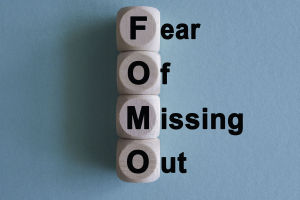For over a century, secondhand shops have been a haven for bargain hunters and eco-conscious consumers alike.
However, as environmental concerns grow and the fashion industry faces scrutiny for its substantial carbon footprint, brands are rethinking their business models.
Resale, repair, and rental—collectively known as "re-commerce" are emerging as key strategies to extend the lifecycle of garments, reduce waste, and lower emissions!
Luxury Brands Embrace Re-Commerce
Luxury and outdoor brands, once focused solely on exclusivity, are now diving into the secondhand market. Some, like Rolex, have launched their own certified used goods marketplaces, while others partner with digital consignment platforms like the RealReal and thredUp.
Gucci’s collaboration with the RealReal in 2020 created a microsite featuring authenticated pre-loved products, while Athleta partnered with thredUp in 2022 to launch its "Preloved" marketplace, incentivizing customers with store credits for selling old items.
Even iconic brands are designing for resale from the outset. French fashion house Chloé embedded serial numbers into its Spring 2023 collection, enabling seamless resale on platforms like Vestiaire Collective. This integration offers traceability, care instructions, and easy resale options, extending the lifespan of each piece.
Environmental and Economic Benefits
Re-commerce offers significant environmental advantages. A 2020 McKinsey study found that circular strategies like resale could reduce new production needs by a third, cutting annual carbon emissions by up to 16% for premium and outdoor brands by 2040.
Changing Consumer Preferences
Younger generations are driving this shift. Millennials and Gen Z, more aware of fashion's environmental impact, are rejecting fast fashion in favor of sustainable options. Thrifting and online platforms offer them an opportunity to engage in fashion responsibly.
Repair and Longevity
Beyond resale, brands are promoting repair and care. Patagonia has introduced video tutorials for fixing zippers and buttons, while REI offers guides for cleaning and maintaining outdoor gear. These initiatives not only reduce waste but also empower consumers to value and extend the life of their clothing.
Challenges to True Sustainability
While re-commerce is a step forward, experts warn it’s not enough if companies continue chasing production growth. The fashion industry produces 100 billion garments annually, and consumers buy 60% more clothing than they did 25 years ago.
Re-commerce, repair initiatives, and consumer-driven demand for sustainability signal a hopeful shift in the fashion industry. However, for these efforts to create meaningful change, brands must embrace circularity wholeheartedly, moving away from overproduction and waste.
With increasing consumer awareness and innovative business models, the industry has the potential to become a force for environmental good, transforming fashion into a truly sustainable sector!


